
|
Astronomy Picture Of the Day (APOD)
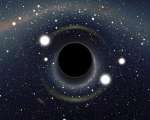 Too Close to a Black Hole
Too Close to a Black Hole
6.12.2010
What would you see if you went right up to a black hole? Above is a computer generated image highlighting how strange things would look. The black hole has such strong gravity that light is noticeably bent towards it - causing some very unusual visual distortions.
 Mono Lake: Home to the Strange Microbe GFAJ 1
Mono Lake: Home to the Strange Microbe GFAJ 1
5.12.2010
How strange could alien life be? An indication that the fundamental elements that compose most terrestrial life forms might differ out in the universe was found in unusual Mono Lake in California, USA. Bacteria...
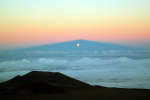 Moonrise Through Mauna Keas Shadow
Moonrise Through Mauna Keas Shadow
4.12.2010
How can the Moon rise through a mountain? It cannot -- what was photographed here is a moonrise through the shadow of a large volcano. The volcano is Mauna Kea, Hawai'i, USA, a frequent spot for spectacular photographs since it is arguably the premier observing location on planet Earth.
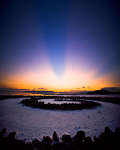 Sunset at the Spiral Jetty
Sunset at the Spiral Jetty
3.12.2010
In dwindling twilight at an August day's end, these broad dark bands appeared in the sky for a moment, seen from Robert Smithson's Spiral Jetty on the eastern shore of Utah's Great Salt Lake.
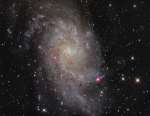 M33: Triangulum Galaxy
M33: Triangulum Galaxy
2.12.2010
The small, northern constellation Triangulum harbors this magnificent face-on spiral galaxy, M33. Its popular names include the Pinwheel Galaxy or just the Triangulum Galaxy. M33 is over 50,000 light-years in diameter, third largest in the Local Group of galaxies after the Andromeda Galaxy (M31), and our own Milky Way.
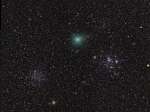 Hartley 2 Star Cluster Tour
Hartley 2 Star Cluster Tour
1.12.2010
Early in November, small but active Comet Hartley 2 (103/P Hartley) became the fifth comet imaged close-up by a spacecraft from planet Earth. Continuing its own tour of the solar system with a 6 year orbital period, Hartley 2 is now appearing in the nautical constellation Puppis.
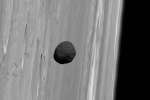 Martian Moon Phobos from Mars Express
Martian Moon Phobos from Mars Express
30.11.2010
Why is Phobos so dark? Phobos, the largest and innermost of two Martian moons, is the darkest moon in the entire Solar System. Its unusual orbit and color indicate that it may be a captured asteroid composed of a mixture of ice and dark rock.
 A Supercell Thunderstorm Cloud Over Montana
A Supercell Thunderstorm Cloud Over Montana
29.11.2010
Is that a spaceship or a cloud? Although it may seem like an alien mothership, it's actually a impressive thunderstorm cloud called a supercell. Such colossal storm systems center on mesocyclones -- rotating updrafts that can span several kilometers and deliver torrential rain and high winds including tornadoes.
 Dark Belt Reappearing on Jupiter
Dark Belt Reappearing on Jupiter
28.11.2010
Why are planet-circling clouds disappearing and reappearing on Jupiter? Although the ultimate cause remains unknown, planetary meteorologists are beginning to better understand what is happening. Earlier this year, unexpectedly, Jupiter's dark Southern Equatorial Belt (SEB) disappeared. The changes were first noted by amateurs dedicated to watching Jupiter full time.
 Anticrepuscular Rays Over Colorado
Anticrepuscular Rays Over Colorado
27.11.2010
What's happening over the horizon? Although the scene may appear somehow supernatural, nothing more unusual is occurring than a setting Sun and some well placed clouds. Pictured above are anticrepuscular rays. To understand them, start by picturing common crepuscular rays that are seen any time that sunlight pours though scattered clouds.
|
January February March April May June July August September October November December |
||||||||||||||||||||||||||||||||||||||||||||||||||||||||